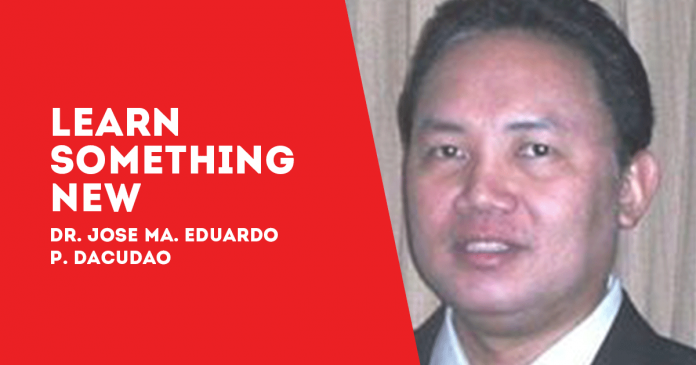
BY JOSE PALU-AY DACUDAO
AN UNCONSCIOUS person is a mindless one. That probably means that the ascending reticular activating system (ARAS), which is said to be the anatomical basis for consciousness (as inferred by the fact that damage to the ARAS by strokes or accidents causes a decrease in sensorium), plays an indispensable role. The ARAS is made up of the neuronal cell bodies adjacent to the ventricular system in the upper pons, mesencephalon (midbrain), and diencephalon (thalamus), and these must be activated as well, for the mind to do any minding at all.
In addition, since our mind’s decisions are obviously influenced by our subjective emotions, then the purported anatomical seat for emotions, the limbic system of the brain, must be involved as well. This system is mostly made up of several nuclei of neuronal cell bodies deep in the cerebral hemispheres.
The neurons of the cerebral hemisphere are constantly firing, creating electrochemical patterns all over the cerebral cortex and deep gray matter. It is hypothesized that these patterns may form the basis for memories. Perhaps even the mind, as mentioned above?
One can imagine these electrochemical patterns occurring in a default setting. The mind then chooses to enact a specific volitional movement, say flex the thumb. I would hypothesize this: At the moment of decision for this option, there would be change in the default pattern of the electrochemical action potentials occurring in the cerebral cortex. And that this change would converge upon the precentral gyrus (motor cortex), on to the specific area that controls the contralateral thumb muscles. This particular area would be located on the lateral part of the motor cortex.
Thus, I can conceive of an experiment that monitors the electrochemical activities of the cerebral cortex as a whole, and with emphasis on the particular part of the motor cortex of interest (in this case a part of the precentral gyrus located laterally.)
Other experiments could be done for other muscle groups, specific muscles, and volitional speech (in the latter, one must monitor the brain’s speech center, the Broca’s area).
The devil will be in the details again. Does present science and technology have the capacity to do such close monitoring of the brain’s electrochemical activities? The monitoring instrument must be quick enough to detect the changes in the electrochemical pattern of the brain’s cortex in the time interval from the decision to move a muscle by the mind to the firing of the UMN, and be super accurate to boot. The only things that I can think of that can approach such capability is the PET scan (Positron Emission Tomography), or perhaps some kind of supersensitive EEG (Electroencephalography). But there may be others I am not aware of.
If such an experiment is possible, then it should be done. Let me be clear on my opinion on that. But even if such an experiment is done, I don’t think it will answer the question of the nature of the mind.
It would not answer the question: What triggers the changes in the electrochemical pattern of the cerebral hemisphere’s cortex?
You might say offhand, our mind of course. We will it to happen; it happens.
So what is the process by which the mind directs changes in the electrochemical pattern of the cerebral hemisphere’s cortex?
Suppose we are able to answer the above. There will be a next question. Say how is the ARAS involved? And a next. Say how is the limbic system (deep gray matter, that is neuronal cell bodies, in the telencephalon and their connections, said to be the seat of subjective emotions) involved? And a next. And a next. For each question, we must be able to do experiments that require quick and accurate monitoring of those parts of the brain that are involved.
Soon we will see ourselves getting to the point of asking again: what is the nature of the mind? Because that’s where volitional movement starts, and so far, we are just investigating the processes from mind to muscle.
Do scientists know how we move our muscles?
Yes. No. Don’t know. Not sure. Hu-o. Indi. Ambot. Ambot.
We trek along the mind-body problem.
Out of a blackhole, into another./PN







